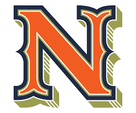Vertical Divider
questions for revision practice and discussion

EWSPAPERS, PRINT & ONLINE NEWS SAMPLE QUESTIONS FOR INDEPENDENT STUDY & 'STUDY BUDY' DISCUSSIONS
Question Bank A For each front cover you study, answer the following questions. Each question is worth 5 marks. ** questions are worth 10 marks
- Do a radial 'spider' diagram using as much print terminology as possible and explain the effect of certain conventions.
- How do the tabloid's Codes & Conventions (C&Cs)' grab the reader? Do they trivialize, commercialize (monetize), sensationalize or personalize news events?
- Which particular codes (techniques, C&Cs) appeal to a) a mass-market less well-educated readership b) more educated, niche readers?
- ** Show the importance of construction in shaping media narratives and representations in order to suit particular audiences.
- How successfully does it appeal to different audience types (GEARS)? Does it apply to Young and Rubicam's 4Cs model (MARS)?
- How useful are Hypodermic and Uses & Gratifications UGT models in discussing tabloid newspapers.? Consider the role of Moral Panics.
- **How useful is Gerbner's Cultivation Theory in an analysis of tabloids?
- ** How useful is Clay Shirky's audience theory in a discussion of tabloid covers and online platforms ?
- **Which News Values feature most prominently in these products? (elites, negativity, personalization? Proximity? Expectedness? Unexpectedness?) Look at Galtung & Ruge's definitions of what helps editors decide if a story is newsworthy.
- **Can you find evidence of Chomsky's Propaganda Model (5 news filters)? Are there ethical issues of privacy/intrusion/ Corporate control?
- Compare and contrast the C&Cs in a tabloid and broadsheet front pages. How are they adjusted to match particular audiences?
- Discuss and compare the representations on 2 front pages. Apply other RAILING concepts.
- Show how the covers present news events as a 'narrative' – a constructed story to arouse opinion, emotion,. controversy and connect to other areas of media interest such as sport, celebrity, TV/film.
- **Look at the how the covers fit into concepts of genre (Neale, Lacey);
- To what extent do they feature stereotypes or countertypes?
- **Are there examples of Moral Panics?
- **What does the cover tell us about newspaper ownership?
- **Link the front pages to theories of patriarchy, readings (Hall), connotation, van zoonen, Mulvey & Berger, Cohen (Moral Panics)
- **What does the cover tell us about issues of regulation and control (press complaints post-Leveson enquiry)
QUESTION BANK C -online .
- How does the Mail Online hook its audiences? What relationship, if any, is there with the print edition?
- Analyse the Mail Online's 'sidebar of shame'. What do the items have in common in terms of the way women are represented? – look for examples of objectification, body-shaming, women as male fashion accessories; women as eye-candy; women as coat-hangers; women as child-bearers.
- **Analyse the Guardian's Online presence. What is the effect of the Guardian's paywall?
- **Look at the online edition and see if you can identify differences with the print edition in terms of attracting online audiences and stimulating comment, reaction and participation.
- **Look at the Guardian's Facebook page, Twitter and Instagram feeds – how do they reflect the target readership? Do you think do they give prominence to users' opinions rather than the views of experts? Are there obvious commercial aspects?
- **Do the same as the above for the Mail Online's social network feeds.
Vertical Divider